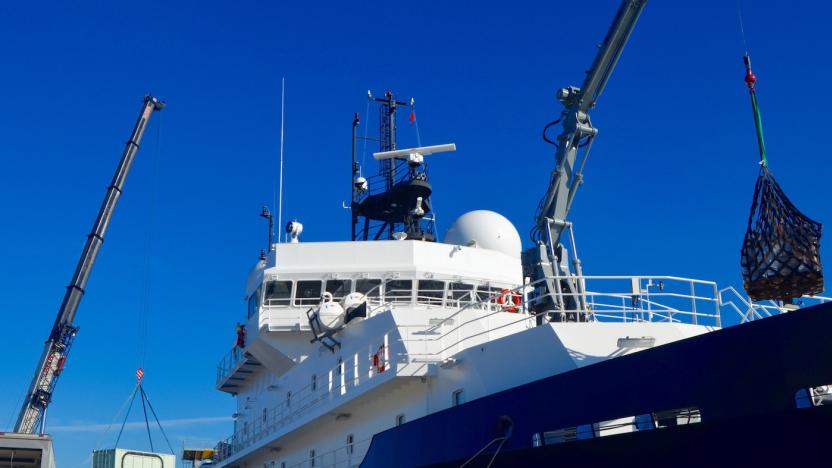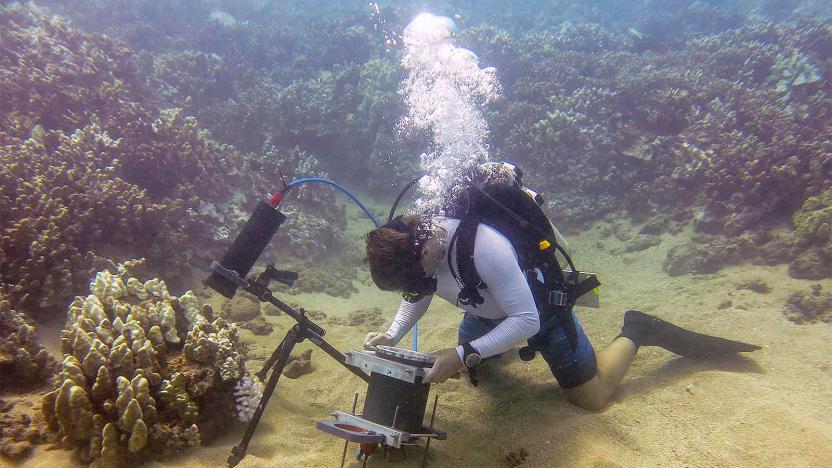scrippsinstitutionofoceanography
Latest

Drones and RC kayaks offer fresh views of the ocean
The Scripps Institution of Oceanography has gotten a few more tech upgrades. Scientists aboard research vessel Sally Ride recently tested a pair of drones and a remote control kayak in an effort to get different views and readings of their subjects.

Underwater microscope offers a brand new look at sea life
Scientists have a hard time studying microscope sea life, and for good reason. Underwater scientific equipment can't study things at that scale, and bringing samples up to the surface frequently deprives them of that all-important natural context. Enter UC San Diego: its researchers have crafted the Benthic Underwater Microscope, the first undersea microscope that can study "millimeter-scale" activity in its native habitat. It combines a water-friendly computer with an imaging system that revolves around both a high magnification lens and a flexible, tunable lens that can see shapes in 3D. Combined with an LED ring light and fluorescence imaging, the system shouldn't be daunted by most water conditions or unusual specimens.

Climate change is pushing clouds up and toward the poles
For the first time, researchers have found evidence that global warming caused by humans is affecting clouds -- and not in a good way. A study by team from the Scripps Institution of Oceanography shows that clouds are being pushed up and out of mid-range latitudes toward the poles. "It's really the first credible evidence that we have of climate change and clouds in the observed record ," says Scripps atmospheric scientists Joel Norris. The cloud shift could push temperatures even higher than predicted, and also shows the need to improve atmospheric measurements.

Drones help find World War II's missing soldiers
The BentProp Project has spent years finding American soldiers who went missing in the Pacific during World War II, but available technology has limited its success. Team members have frequently had to scan wide areas themselves, slowing down their efforts to find downed aircraft and unexploded bombs that might hide human remains. However, the outfit's searches have just taken a big step forward after it got cutting-edge drones from both the Scripps Institution of Oceanography and the University of Delaware. BentProp can now automate much of its scanning, and CNET notes that the organization's latest expedition found two Navy airplanes. That's a breakthrough for a group that only occasionally makes a big discovery.


